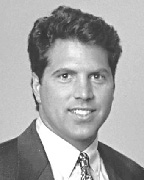Turbulent times like the one we're in today require a higher degree of well-founded market based information so that decision makers can respond quickly to changes in the industry. More than ever before I have been fielding questions from owners and investors inquiring as to what kinds of trends we are seeing in the market. I am often asked, where do you see cap rates? Unfortunately, I cannot answer this question with a simple reply; it requires a more elaborate explanation.
First, one must clarify whether the cap rate was derived by using historic, or trailing net income or based on projected income. It's important to be consistent. If you're applying the rate to projected income, one should be using pro forma cap rates instead of trailing. It's also important to consider whether the rate includes a reserve for repairs, capital leases, or management. Again, either way is acceptable, but consistency is imperative. We generally include operating leases on golf carts, but ignore capital leases on equipment. This is just another form of financing, and capital leases can greatly influence the net cash flow of a property. Often times, the debt on the equipment is accounted for at the closing. It's obviously something that requires comment and consideration, but when valuing property in fee simple before debt, capital leases should not come into play.
Most buyers feel they can operate the property better than its current management, therefore in almost every case, the projected net income is significantly higher than its trailing income. This creates a large gap between trailing rates and those from projected NOI.
For example, a public golf course in the mid-atlantic just sold for $3.65 million and was reporting a net income of around $200,000, while the buyer anticipates netting twice that amount, or about $422,000 through cost cutting (margin expansion). It's equally as important to look at a clubs profit margin, or percentage of net income. This particular club was generating about $1.7 million in gross sales. Therefore, with a historic net of only $200,000 its operating margin shows a profit of less than 12%, suggesting that this was an inefficient operation. Since highly profitable public courses can put between 20% and 30% to the bottom line, the trailing rate of 5.5% reflects the upside in the operation. Assuming a reasonable profit margin of 20%, this course would have traded at a 9.3%, while assuming more aggressive profits of 25%, like that of the buyer, the projected cap rate would equate to 11.5%. What then was the real cap rate for this sale? And, how can it be used as a tool for valuing other golf properties.
My firm was involved in the sale of a private club in central Massachusetts. It was generating $3.8 million in gross sales and showing a net income of $500,000. The buyer paid $7.25 million. The price was not based on the 6.9% trailing cap rate but instead on the prospect of netting 20% on $4 million of gross sales, meaning a net income of $800,000, indicating a pro forma rate of 11.7%. So, when analyzing this sale, it's important to align the rate with the profit and determine what level of profit can be expected for the property being appraised.
Jeffrey Dugas, MAI, SGA, is a principal with Wellspeak Dugas & Kane, LLC, Cheshire, Conn.
Tags:
What are CAP rates for golf courses? A simple reply will not suffice in today's market
October 29, 2008 - Spotlights









